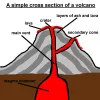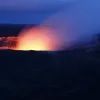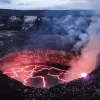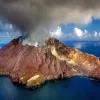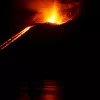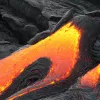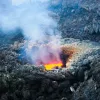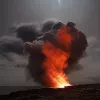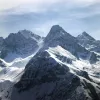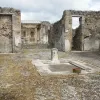Important update from TheSchoolRun
For the past 13 years, TheSchoolRun has been run by a small team of mums working from home, dedicated to providing quality educational resources to primary school parents. Unfortunately, rising supplier costs and falling revenue have made it impossible for us to continue operating, and we’ve had to make the difficult decision to close. The good news: We’ve arranged for another educational provider to take over many of our resources. These will be hosted on a new portal, where the content will be updated and expanded to support your child’s learning.
What this means for subscribers:
- Your subscription is still active, and for now, you can keep using the website as normal — just log in with your usual details to access all our articles and resources*.
- In a few months, all resources will move to the new portal. You’ll continue to have access there until your subscription ends. We’ll send you full details nearer the time.
- As a thank you for your support, we’ll also be sending you 16 primary school eBooks (worth £108.84) to download and keep.
A few changes to be aware of:
- The Learning Journey weekly email has ended, but your child’s plan will still be updated on your dashboard each Monday. Just log in to see the recommended worksheets.
- The 11+ weekly emails have now ended. We sent you all the remaining emails in the series at the end of March — please check your inbox (and spam folder) if you haven’t seen them. You can also follow the full programme here: 11+ Learning Journey.
If you have any questions, please contact us at [email protected]. Thank you for being part of our journey it’s been a privilege to support your family’s learning.
*If you need to reset your password, it will still work as usual. Please check your spam folder if the reset email doesn’t appear in your inbox.
Volcanoes
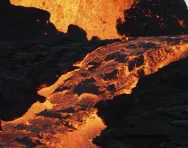
What is a volcano?
A volcano is a very deep hole in the Earth’s top layer that can let out hot gasses, ash and lava. Many volcanoes are also mountains.
Volcanoes have long shafts that go all the way down through the Earth’s first layer, the crust, to magma in between the crust and the mantle (the Earth’s second layer). It’s so hot there that rocks melt into liquid! This is called magma, which travels up through volcanoes and flows out as lava.
Top 10 facts
- Volcanoes are big holes that let out hot gasses, ash and magma from deep inside the Earth.
- Many volcanoes are mountains, made up of layers of lava and ash.
- Many volcanoes have several vents – a main one, and secondary ones that branch off the main vent. The volcano’s main vent goes all the way down to the layer of magma in between the Earth’s crust and mantle.
- The Earth has three layers – the crust at the very top, then the mantle, then the core at the very middle of the planet.
- There are three ways to describe a volcano and explain what it’s doing – active, erupting, and dormant.
- An extinct volcano is one that hasn’t erupted in at least 10,000 years, and that scientists don’t think will erupt again for a very long time.
- The largest active volcano in the world is Mauna Loa, on the Hawaiian islands.
- When a volcano erupts, magma comes up and out through the vents. Magma is called lava when it’s outside the volcano.
- Depending on how thick the magma is, volcanoes can be different shapes such as shield, composite or dome.
- Ash from volcanoes is very good for growing things. It adds nutrients to the soil.

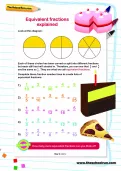
Boost Your Child's Learning Today!
- Start your child on a tailored learning programme
- Maths & English resources delivered each week to your dashboard
- Keep your child's learning on track
Did you know?
- The Earth has three layers:
- crust (at the top)
- mantle (in the middle)
- core (in the centre)
- There are 1,500 active volcanoes in the world and about 50 volcanoes erupt every year!
- Most volcanoes can be found in countries that have coastlines on the Pacific Ocean – this is called the Ring of Fire.
- Gas, ash and magma can come out of volcanoes.
- When magma flows out of a volcano, it’s called lava.
- Most of the gas that comes out of volcanoes is poisonous.
- Some volcanoes are underwater!
- There aren’t any volcanoes in the UK. The largest volcano in Europe is Mount Etna in Sicily (Italy).
- The word ‘volcano’ comes from ‘Vulcan’, the Roman god of fire
Volcano pictures
Have a look through the images in the gallery and see if you can spot the following:
- The parts of a volcano © Anthony Bennett, Internet Geography
- A volcano in Hawaii
- Molten lava
- A smoking crater in New Zealand
- An eruption at Mount Krakatoa, between the islands of Java and Sumatra in Indonesia
- Flowing lava
- Mount Etna in Sicily in Italy
- A lava cloud in Hawaii
Gallery
About
There are lots of different types and sizes of volcanoes, from small cracks in the Earth's surface to huge mountains which have been built up by lots of layers of lava and ash.
Magma is liquid rock in between the crust and the mantle, formed when part of the lower crust or upper mantle melts.
When magma travels up through a volcano’s vent, bubbles of gas also appear. All the gas builds up pressure, which causes the magma to explode out of the volcano. When magma is thin, the gas bubbles can rise and pop easily – volcanoes located over thin magma don’t have very large explosions. When magma is thick, the gas bubbles get trapped and the pressure builds up so much that the explosion shoots high up into the air. If magma cools down as it rushes up the vent, it will come out as rock or ash.
Volcanoes can be very dangerous; some of the worst natural dissters in human history have been caused by erupting volcanoes. Lava flowing out of volcanoes can burn and destroy anything in its path, and ash can be so thick in the air that it’s hard to breathe. Earthquakes can happen when a volcano erupts, causing very large waves called tsunamis. If gases and ash get into the atmosphere, it can even change the weather by causing thunderstorms and cool temperatures.
When volcanoes haven't erupted for many years (perhaps thousands!), people begin to live near them in order to farm the land which is very fertile thanks to the volcanic ash. If the volcano does erupt, there can be huge loss of human life in nearby cities. In the biggest explosion in recorded history, the eruption of Tambora in Indonesia in 1815, an estimated 60,000 people lost their lives and the ash cloud affected farming, causing the worst famine of the century.
Volcanologists (scientists who study volcanoes) can sometimes tell if a volcano is going to erupt by keeping track of earthquakes underneath it. The types of gases coming out of the vent can also change close to an eruption. Animals living near a volcano may start to act differently, as if they can sense something is going to happen.
The Earth’s surface is made up of lots of pieces called tectonic plates. These plates can slide against each other, which lets magma from underneath squeeze up through the cracks. When tectonic plates move, it also causes earthquakes. Most volcanoes are located along the edges of tectonic plates, especially around the Pacific Ocean – this is called the Pacific Ring of Fire.
The ancient Romans wrote about a huge volcanic eruption that happened in 79 AD in Pompeii. The ash and rocks that erupted out of Mount Vesuvius buried nearby towns and killed more than 2,000 people. Mount Vesuvius is dormant today.
Other famous volcanic eruptions in history are:
- Mount Tambora (Indonesia) in 1815
- Krakatoa (Indonesia) in 1883
- Mount Pelée (Martinique) in 1902
- Mount St Helens (Washington, USA) in 1980
- Mount Pinatubo (Philippines) in 1991
- Eyjafjallajokull (Iceland) in 2010
Words to know
- Active volcano – a volcano that erupts regularly
- Crater – the bowl-shaped area at the top of a volcano’s vent
- Dormant volcano – a volcano that has not erupted in a very long time, but could again
- Extinct volcano – a volcano that has not erupted in thousands of years, and doesn’t look like it will erupt again
- Magma chamber – the pool of magma located underneath the volcano’s vent
- Supervolcano – a volcano that has an eruption where the amount of stuff that comes out is more than 1,000 cubic kilometres
- Vent – the main part of a volcano where magma and gasses come through from deep inside the Earth
- Volcanologist – a scientist who studies volcanoes
Related Videos
Just for fun...
- Play Volcano Island: decide when you think a volcano is going to erupt and when people should evacuate. Will you make an accurate prediction?
- Try some volcano experiments and activities
- Volcano information posters, factsheets, quizzes, wordsearches and crosswords to download and print
- Download, print and make a volcano model
- Make your own volcano at home
- Try a lava flow experiment
- Print out your own volcano mini book to colour in
- Take a tricky volcanoes quiz
- Try some volcano activity sheets or make your own 3D volcano model with a template
- Can you place volcanoes in the correct place on an interactive map?
Children's books about volcanoes
See for yourself
- Visit the Natural History Museum in London: their brand-new gallery about volcanoes and earthquakes features an earthquake simulator where you can feel the groud shake underneath your feet, as well as a heat suit worn by volcanologists.
- Watch an animation of a volcano erupting from the safety of your own home!
- Listen to a volcano erupt
- Look through some awe-inspiring volcano pictures
Find out more
- CBBC: volcanoes
- See a detailed diagram of what the inside of a volcano looks like
- Download some volcano diagrams
- Look at a volcano facts infographic
- BBC Bitesize: volcanoes
- Watch a video about the Yellowstone supervolcano, one of our planet's restless giants
- Find out how the shape of a volcano reflects its "personality"
- Find out more about plate tectonics with your very own Plate Tectonics Passport
- Explosive volcano facts from National Geographic Kids
- Animated guide to volcanoes
- Slideshows and interactive guides to all aspects of volcanoes
- Download a factsheet about volcanoes and try an online interactive resource to help you understand plate tectonics
- An interactive map which tracks every recorded volcanic eruption, earthquake and major sulfur dioxide emission since 1960
- See how deadly volcanic eruptions have been in the past with an infographic
